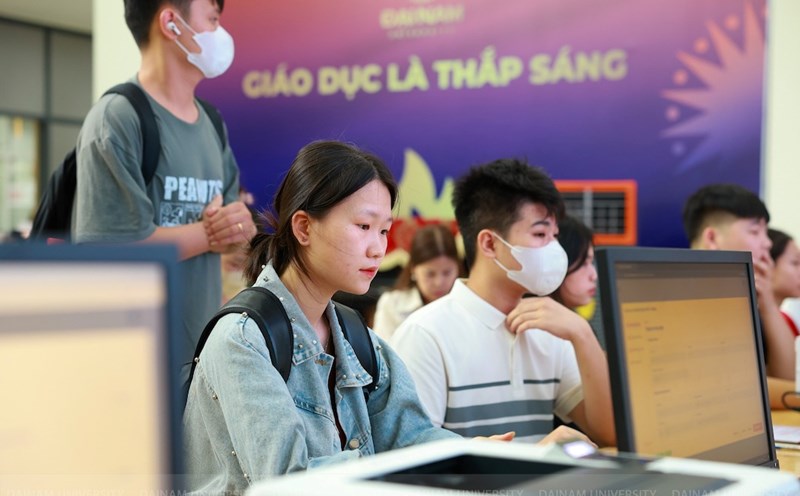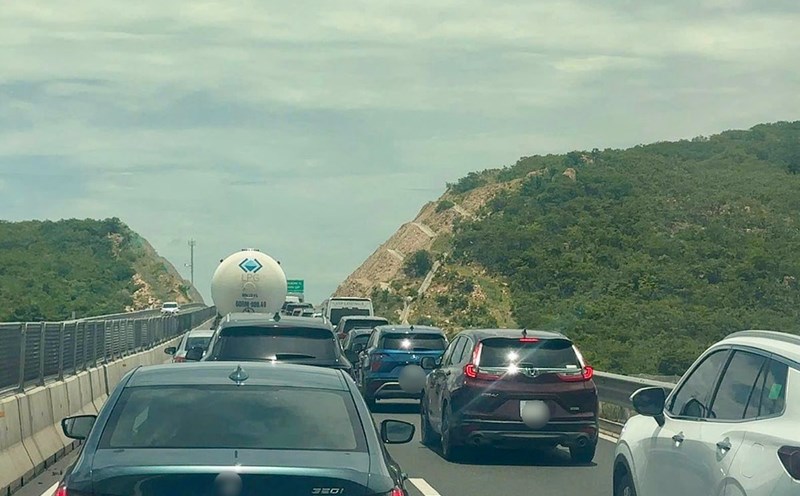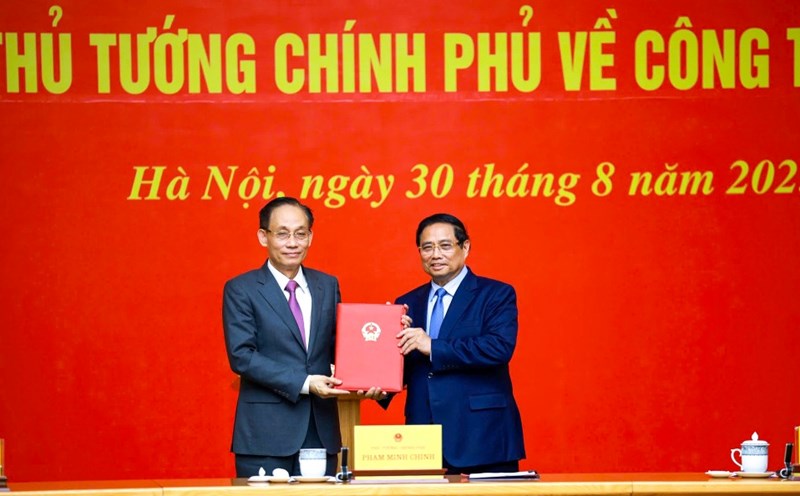Bringing rice from home to the big sea
July 19, 2025 marks an extremely important event in the rice sector nationwide when the hundred-year-old flooded rice crop of the Mekong Delta officially reached the sea along the main rice route on a large scale.
In the presence of the World Wildlife Fund (WWF) in Vietnam, Lang Sen Flooded Area and many authorities and farmers, AMANA LMN Company, under Khai Nam Group, signed a cooperation contract to produce and consume 112 hectares of LMN in 2025 with farmers in Tan Hung and Vinh Chau communes, members of the LMN Service Cooperative (Tay Ninh).
This is the result of success from the 2024 crop, when value-added products made from LMN such as: Me, pho of Khai Nam Group are welcomed by many markets in Europe. With a stable purchase price of VND 15,000/kg (fresh rice - Southern Durian variety) and instructions on non-chemical and non-fertilizing farming techniques, this contract has brought farmers double profits: Both a high income and limited exposure to fertilizers and chemical drugs. As for environmentalists, this is the beginning of the journey to restore the ecosystem...
However, the happiest person is probably young scientist Le Thanh Phong - Deputy Director of the Institute of Climate Change (An Giang University - Vietnam National University, Ho Chi Minh City). The signing ceremony as an affirmation of the market value of the project was honored scientifically.
Previously, on February 17, 2025, Phong's project "Research and commercialization of rice varieties typical of the flood season, adapting to climate change in the upper Mekong Delta" successfully surpassed more than 100 projects nationwide to win the Community Award at the AI Viet Innovation Award 2024.
Planting sedge for rice plants to bloom
Not the first or only person to research LMN, but Phong is the one who gives LMN new vitality.
The LMN has been present in the Mekong Delta for hundreds of years, with the ability to miraculously grow. No need to fertilize or spray pesticides, but wherever the flood water rises, the rice plants can reach their own peaks, sometimes up to 3-5m and can only grow 1 crop per year, so it is called LMN, meaning rice always floats on the water. But LMN has some disadvantages: High starch content makes the rice hard, has no aroma, very low productivity (1.2-1.5 tons/ha)...
In 2011, when he was invited to participate in research on the program related to LMN, because he had not been familiar with rice plants for hundreds of years, the boy from the land of Lai Vung pink Hamlet (Dong Thap) asked the "veterans" to help him choose the typical LMN variety of the lowland of Long Xuyen Quadrangle, which is Bong Sen, but when planted, he produced many different varieties.
After that, Phong decided to commit himself. In 2015, after selecting the self-collected varieties in An Giang and Dong Thap, Phong went to Vinh Phuoc commune - the deeply flooded area of Tri Ton district (now Vinh Gia commune, An Giang province) to coordinate with farmers to plant. The first time launching, Phong immediately faced a challenge when encountering the El Nino pandemic.
To save the rice from drought, Phong beads the banks to store water. When the rice was in full bloom, because the fields were only LMN fields at that time, the mice and birds attacked simultaneously. After using nylon to cover the rat bar below, Phong had to buy a fish caught net and spread it all over the area as if spreading the buds to ensure the safety of the rice plant to bloom.
And from this breed source, Phong gradually breeds and selects breeds according to the breeding method, with the intervention of biotechnology, including the method of marking the molecules to find flood-prone genes and fragrant genes.
To date, Phong has successfully announced 40 new-generation LMN groups, with a yield of 3 tons/ha. Especially soft, sticky rice, with a fragrant and slightly sticky smell, very suitable for modern consumer tastes. Notable among them is the name "The Western couple". Since then, he has diligently traveled everywhere to collect, classify LMN and build a breeding group of nearly 500 different varieties/tycies.
Revealing the pure soul of the countryside
At the signing ceremony, in addition to affirming the nutritional value and characteristic aroma of new-generation LMN, many experts also recognized from LMN the ability to patch the pure homeland of the Mekong Delta.
The revival and expansion of LMN is not only a reality of natural agricultural solutions but can also solve many challenges: Improving livelihoods and resilience for farmers, while contributing to biodiversity conservation and climate change adaptation - Mr. Huynh Quoc Tinh - Director of the Agriculture and Sustainable Food Program, WWF-Vietnam, shared.
But for Phong, this is just the beginning of the journey to patch the Chin Rong commodity ecosystem.
"While solutions to build freshwater reservoirs for the Mekong Delta are still controversial because of the high cost, but we are not sure to bring efficiency, we are aiming for the option of using LMN fields as floodwater storage sites" - Phong shared.








